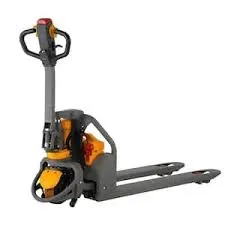


Safety Equipment for Working at Heights
Working at heights is an essential aspect of many industries, including construction, maintenance, and window cleaning. However, it is also an activity fraught with significant risks. According to statistics, falls from heights are among the leading causes of workplace injuries and fatalities. Therefore, ensuring worker safety through the use of appropriate safety equipment is paramount. This article discusses the critical safety equipment necessary for working at heights and highlights best practices for their use.
The first line of defense against falls is personal protective equipment (PPE). One of the most vital components of PPE for working at heights is a well-fitted safety harness. Safety harnesses are designed to restrain the wearer and prevent falls. They must be chosen carefully based on the specific tasks and should be inspected regularly for signs of wear or damage. It is crucial to ensure that the harness fits properly, as an ill-fitting harness can lead to injury rather than protection in the event of a fall.
In addition to a safety harness, lifelines and lanyards are essential components. Lifelines are fixed cables or ropes that provide a secure anchor point for the worker. Lanyards connect the harness to the lifeline, allowing workers to move freely while remaining secured. There are different types of lanyards, including shock-absorbing lanyards, which can reduce the amount of force transmitted to the body in the event of a fall. It is essential to choose the correct type of lanyard and ensure that it is compatible with the harness being used.
Another crucial piece of equipment is the safety helmet. Falling objects can pose a significant risk when working at heights, making a sturdy safety helmet indispensable. It not only protects the head from potential impact but also helps prevent other injuries, such as concussions. High-visibility helmets can further enhance safety by ensuring that workers are easily seen, especially in busy job sites.

Guardrails and edge protection are also essential when working at heights. These physical barriers help prevent falls by creating a protective perimeter around the work area. It is advisable to install guardrails wherever possible, particularly on scaffolding and rooftops. Edge protection systems can be fixed or portable and should be designed to withstand the forces of a fall.
Furthermore, safety shoes equipped with anti-slip soles are vital for maintaining grip and preventing slips and falls. The right footwear can significantly reduce the likelihood of accidents caused by unstable surfaces.
Training is equally important in promoting safety when working at heights. Workers must undergo comprehensive training that covers the proper use of safety equipment, recognition of hazards, and emergency response procedures. This training complements the equipment and ensures that workers understand how to use it effectively.
In conclusion, safety equipment for working at heights is essential for preventing falls and protecting workers from injuries. By utilizing safety harnesses, lifelines, helmets, guardrails, and appropriate footwear, and by providing proper training, employers can create a safer work environment for their employees. The investment in quality safety equipment and training is not just a legal obligation but a moral responsibility to ensure the well-being of workers engaged in high-risk activities. Safety must always be the priority in any industry where working at heights is involved.



